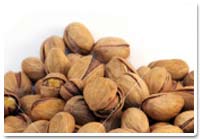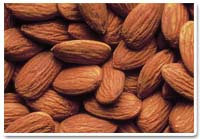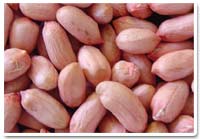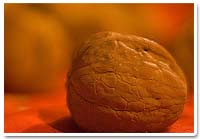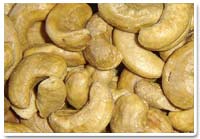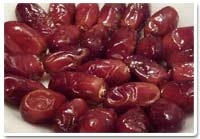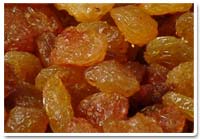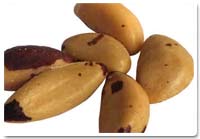Figs
Introduction

Dried figs can be part of almost any special diet, be it low fat, low sodium, high fiber, weight loss, diabetic or even the Mediterranean. They satisfy a sweet tooth without adding any fat. Their unique satiny texture and seeds provide a satisfying mouth feel and crunch. These are perfect for baking, cooking, mixes, or just snacking on.
What are Figs?

Figs -Genus
- French ‘figue’
- German ‘feige’
- Italian ‘fico’
- Latin ‘ficus’
- Greek, sykon.
A Brief Historical Background (and Literary References To Figs)
Figs are mentioned in the earliest recorded history. When Cato advocated the conquest of Carthage, he used as his crowning argument the advantage of acquiring fruits as glorious as the North African figs, specimens of which he pulled from his toga as exhibits in the Roman Senate.

Of the three members of the Moraceae family, the fig has spread most widely. It was first recorded in the tablets of Lagash in Sumer (2738-2371) BC and has since appeared in the recorded history from
Egypt to Greece, where it was a staple food of both rich and poor. The fig was such a staple food that Egyptian armies are recorded as having cut down the figs and vines of their enemies, and whole baskets of figs have been discovered among the tomb offerings of dynastic kings.
Homer wrote of figs when he described the orchard of Alcinous, visited by Ulysses, which featured figs, olives, pomegranates, apples and pears.
The poet Alexis of Thuria in the 4th century celebrated the fare of the average Greek which included “that God-given inheritance of our mother country, darling of my heart, a dried fig.” Cleopatra ended her life with an asp brought to her in a basket of figs.
The fig probably originated in Asia Minor, and has been highly regarded from the earliest times as a major contributor to the diets of many countries. Figs were one of the crops that became known in China during the T’ang dynasty which rose to power in the 700′s BC. Its importance in Hellenic culture and economic life is second only that that of the grape and the olive.
Pliny the Elder (AD 23 – 79) records several stories about fig trees in Rome. He asserts that a sacred fig tree grows in the Roman Forum. Alluding to the myth that Rome was founded by the twins, Romulus and Remus, who suckled on a she-wolf, Pliny tells us that, “This tree is known as Ruminalis because the she-wolf was discovered beneath it giving her teats (rumis in Latin) to the infant boys.”Another fig tree grows in the Forum where a chasm had opened up. Soothsayers had predicted that only by throwing Rome’s greatest treasure into the chasm, would it be filled. Marcus Curtius, mounted on his noble steed, asserted that he would fill the hole with the greatest treasures – virtue, a sense of duty, and his own death. He leapt into the hole and the earth closed around him. According to legend a self-seeded fig tree sprouted here.
In the first half of the sixteenth century, the fig was brought to England by Cardinal Pole, a few years before Cortez introduced the tree to Mexico.
Today, the United States, Turkey, Greece and Spain are the primary producing nations of dried figs.
Figs in the Bible

“And they sewed fig leaves together, and made themselves aprons. And they heard the voice of the Lord God walking in the garden in the cool of the day.” Genesis 3:7
“They shall sit every man under his vine, and under his fig tree.” Micah 4: 4
Nutritional Figs
Figs are always rich in complex carbohydrates, a good source of dietary fiber and a wealth of essential minerals such as potassium, iron and calcium. When one eats a half-cup of figs one get as much calcium as when one drink a half-cup of milk. Figs are deliciously portable, so they are readily available as calcium-rich snacks at home, at work, at play or on the road. Needed for strong bones and teeth, calcium is the most abundant mineral in the body, but one that often is lacking in diets. Growing teens and women have especially high needs for calcium.
Figs – No Fat and High in Nutrients
Figs have no fat, saturated fat, cholesterol or sodium, figs help you meet today’s dietary guidelines established by various Health organizations, since these organizations recommend a diet low in fat, high in vitamins, minerals and dietary fiber to help lower the risk of heart disease and some types of cancer.
Figs’ full flavor and chewy texture make them a tasty, nutritious addition to one’s healthful diet.
Dietary fiber, found only in plant foods, aids digestion, and may help reduce the risk of some types of cancer, according to the National Cancer Institute’s 5 a Day for Better Health program.
Tips on Storing and Handling Figs
Place 1/2 cup figs in a microwave-safe dish.
Sprinkle with 1 teaspoon water.
Cover loosely and microwave on high for one minute.
Store figs in refrigerator after opening.
While figs are available year-round, they also can be kept in the freezer for up to one year.
Fascinating Facts About Figs
- Fig trees have no blossoms on their branches. The blossom is inside of the fruit! Many tiny flowers produce the crunchy little seeds that give figs their unique texture
- Figs are harvested according to nature’s clock, fully ripened and partially dried on the tree
- Figs naturally help hold in moisture in baked goods, keeping them fresher
- Fig puree can be used to replace fat in baked goods.






